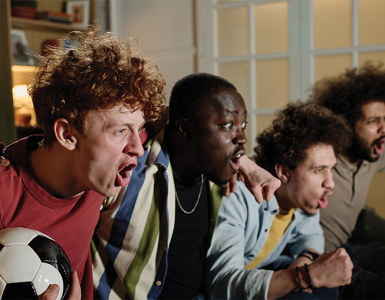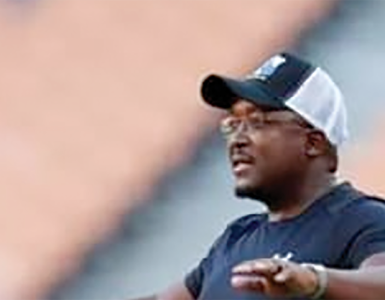A CLASS APART: The big US hope would go on to strike gold in the 100m, 200m, long jump and 4x100m in 1984 emulating what his childhood idol Jesse Owens had famously done at the Berlin Olympics in 1936
By Sports Reporter
On the evening of 4 August 1984, Carl Lewis settled into his starting blocks in the Los Angeles Coliseum for the first leg of his quest to emulate the quadruple golden Olympic deeds of the idol he first encountered some 13 years earlier.
The big US hope for the LA Olympics was just 10 when his father took him to a track meeting for novices in Philadelphia in 1971 and introduced him to the 57-year-old Jesse Owens. “Have fun,” the great sprinter and long jumper told him.
Lewis’ declared intention for those home Games of 1984 was to strike gold in the 100m, 200m, long jump and 4x100m, as Owens had famously done at the Berlin Olympics in 1936.
First up was the 100m, the event in which the star of the Santa Monica Track Club was deemed to be at his most vulnerable – even though he won the event at the inaugural World Athletics Championships in Helsinki the previous year by 0.17.
“You should have had the world record” As it transpired, Lewis was a class apart, despite a sluggish start that allowed his US teammate Sam Graddy and “one of the sprinters I did not know much about, a Canadian named Ben Johnson” to steal a significant march on him.
Graddy still led at 80 metres, but Lewis was travelling at 28mph by then and pulled clear to win by 0.20, a record margin matched by Usain Bolt in Beijing in 2008. He took gold number one in 9.99, with Graddy second in 10.19 and Johnson a surprise third in 10.22.
“I didn’t react well at the gun,” Lewis lamented. “When I stood up at about 15 metres, I saw that Sam was ahead of me; in fact, quite a few people were ahead of me.
“I just stayed relaxed. The whole time, I knew I was going to win. The event that had worried me the most was over.”
Lewis’ coach, Tom Tellez, was waiting for him as he made his way out of the stadium. “He just stuck out his hand, shook mine and said, ‘You were bad out of the blocks’,” Lewis recalled. “’You should have had the world record’.”
Two days later, Tellez’s golden boy showed a Midas touch from the off in the long jump final. Unbeaten in 36 straight competitions, Lewis effectively secured victory with his first-round effort, 8.54m.
He only took one more jump, a foul, and still won by 30cm from Australia’s Gary Honey. With six races behind him, and five more to go, he didn’t want to risk aggravating a sore hamstring.
There were jeers from sections of the 92,000 crowd who had cheered him to the rafters after the 100m final. “They wanted to see me break the world record (Bob Beamon’s 8.90m),” Lewis reflected. “Taking another jump on a bad leg would not have made sense, especially with two events left.”
Lewis’ hamstring was still niggling when he lined up for the 200m final two days later but he got off to a snappy start, ran a storming bend and clocked 19.80 – an Olympic record – into a headwind (-0.9). He also led a US clean sweep, Kirk Baptise taking silver in 19.96 and Thomas Jefferson bronze in 20.26.
“My leg was still sore and all I wanted to do was finish the race,” Lewis confessed in his autobiography Inside Track. “But I felt good out of the blocks and ended up with one of the best 200s ever, just by staying relaxed.”
Incredible joy
Lewis could have afforded to relax when the baton was handed to him in the 4x100m relay final three days after that.
Calvin Smith, the 100m world record-holder and 200m world champion, ran such a blistering bend that Lewis had a cushion of five metres as he set off on the anchor leg. He proceeded to clock a stunning split of 8.4 from a rolling start.
That brought the US home eight metres clear of Jamaica in 37.83, 0.03 inside the world record they had set in Helsinki the year before. It was the only track and field world record of the 1984 Olympic Games.
“I was thrilled to be part of a US team that accomplished a world record,” said Lewis, who paid tribute to Smith and to Graddy and Ron Brown, who ran the opening two legs. “My four events were done. I had been challenged and criticised, but I had survived.
“There was joy – incredible joy – but more than that, I felt relief.” There was also, of course, a place in posterity – alongside his long-time inspiration, Owens.
“To duplicate one of track and field’s greatest feats is an honour,” said Lewis. “Everybody said it couldn’t be done. Even I said over a year ago that I didn’t think I could do it.
“Jesse Owens is still the same man to me he was before. He is a legend.”































